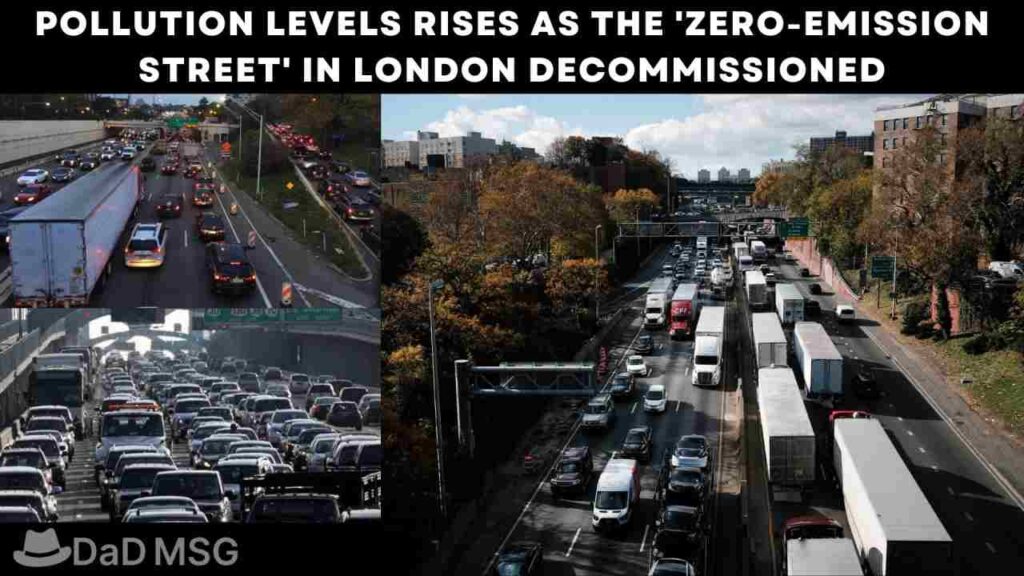After the UK’s first “zero-emission street” was scrapped, illegal pollution levels have returned to a road near one of London’s cultural hotspots.
In an 18-month experiment initiated by the City of London Corporation in March 2020, Beech Street, a tunnel that runs beneath the Barbican complex, was confined to electric vehicles and bicycles.
However, when the £1.8m experiment concluded last September, the limitations were discreetly withdrawn to allow petrol and diesel cars to use it again – and nitrogen dioxide levels have once again exceeded UK legal limits.
Before the trial, NO2 emissions in Beech Street were 58.8 ug/m3 – far higher than the London roadside average – but dropped to 19.5 after signs for the 24/7 low emission street was up.
According to an Imperial College London study, they grew marginally despite the traffic limitations enforced by CCTV but surged to 39 when the experiment ceased.
According to environmentalists, the most recent NO2 readings hit 41, above the maximum allowable limit of 40 ug/m3.
In an additional twist, the Barbican Centre is also informing visitors that Beech Street is now available to all cars, essentially promoting more automobile trips.
“Dirty air is again on display at the Barbican,” said Oliver Lord, UK chairman of the Clean Cities Campaign, which commissioned the Imperial research.
When the City Corporation announced its intentions for Beech Street in December 2019, it stated that the route “experiences significant levels of air pollution due to its busy, confined thoroughfare.”
It projected a “significant improvement” in air quality, “leading to health benefits for the area’s numerous walkers and cyclists.” It pledged “bold and ambitious efforts” to preserve public health and stated that Beech Street was “just one component of the City Corporation’s overall plan.”
The strategy resulted in around 930 cars per day utilising Beech Street – fewer than 10% of the 9,500 vehicles that used it before to the limitations.
A total of 34,000 penalty fines were issued to motorists who violated the zero-emission regulations with their automobiles.
Opponents of the proposal filed a legal review at the High Court, but the court decided in favour of the City Corporation last August.
“This type of arrangement has the potential to assist Beech Street in meeting UK air quality targets, even though it formerly measured twice the yearly nitrogen dioxide objective concentration as recently as 2017.”
According to campaigners, the European Air Quality Directive requires that permissible air levels “not be exceeded once obtained,” putting more pressure on the City Corporation to take new safeguards.
Members of the City Corporation voted in December to begin a public consultation to make the Beech Street project permanent. In May, a financing decision will be made.
According to a report to members, by last November, an average of 1,675 cars per day were utilising Beech Street — 18% of pre-pandemic levels.
“The return of unfettered traffic to Beech Street, even in smaller numbers than before the pandemic, will almost certainly result in NO2 levels on Beech Street continuously exceeding existing health-based guidelines,” it added.


